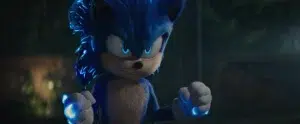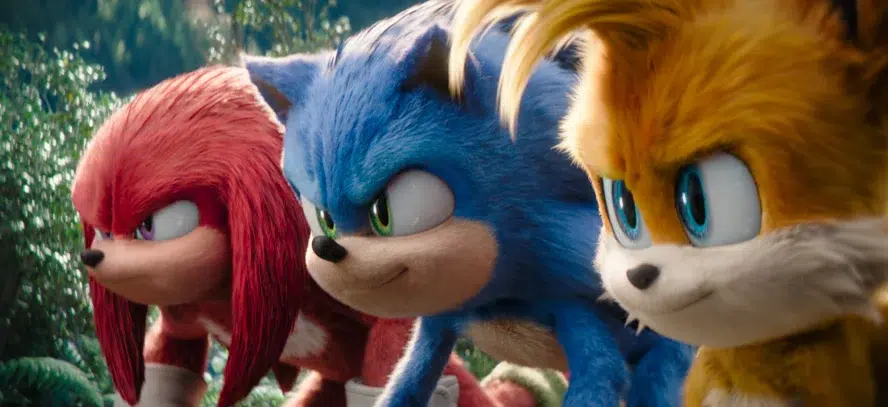A sneak preview of Sega's blazing new Dreamcast game machine
Damn, that hedgehog's fast! That's my first reaction as I watch the video game character Sonic zip across the television screen like a blue bullet. I'm the envy of every gamer east of Japan because I'm getting a sneak peek at Sega's new Dreamcast video game system.
Dreamcast, which makes its American debut this fall, is Sega's weapon to reclaim its throne at the top of the video game console industry. It's the newest of the shoebox-size gadgets you plug into your television to turn your family room into an arcade. Sega's 16-bit Genesis system ruled the gaming landscape three generations ago (about four years in human time). My friends and I spent more than a few of our grad school days playing the NBA Action and Earthworm Jim games.
But by 1995, Sony had raised the ante on Sega by offering the 32-bit PlayStation system, and then in 1996 Nintendo doubled that to 64 bits, the current standard.
(The more “bits,” or computer-processing power, your system has, the better graphics, sound, and action you'll get.) My obsolete Sega Genesis was banished to a box long ago, its whereabouts now unknown.
Challenging Sony. Dreamcast could bring Sega back to my household and a few million others nationwide. At 128 bits, it has twice as much power as the Nintendo 64, its closest challenger in the console market. Sony's PlayStation is the bestselling console platform, with more than 17 million systems plugged into North American TVs, but it sports a mere 32-bit processor.
PlayStation has hung on to the top position because it has more games and was, at first, cheaper. PlayStation and Nintendo 64 combined claimed a total of 27 million homes at the end of 1998, up from 6 million homes in 1996. “Dreamcast is sort of Sega's last shot,” said Seema Williams, a video game analyst with Forrester Research, a market research group. “They burned a lot of people when Saturn (Dreamcast's 32-bit predecessor) failed. They're going to have to prove its value.” To budge competitors, Dreamcast is counting on wowing consumers with its system's extra power, which revs up speed and supplies engaging action and fine details missing in other video game systems.
The new system's first big game, Sonic's Adventure, vividly displays the improvement. The point of the game is to get Sonic from one end of a mazelike, pitfall-filled landscape to the other as fast as possible and before the bad guys kill him. Dreamcast puts Sonic in a convincing three-dimensional setting, something my old Sega Genesis could never do. The lushly rendered graphics and lively sounds make video water flow like the real thing. As Sonic hurtles through the sky, you even see “sunlight” reflections on the “camera lens” just as you would if you were filming the action in real life with a camcorder.
Dreamcast's improvements to the design of video game consoles go further than just what you see on the TV screen. On every level, Dreamcast comes up with clever ways to make play more fun. For instance, it offers a unique solution to a nagging problem in sports video games. These games let players re-enact their team's favorite set plays. Suit up as the Utah Jazz on a basketball video game, and you'll get to run John Stockton and Karl Malone's patented “pick and roll.” The problem has been that, since you've got only one TV screen, your opponent can watch you call up the play and maneuver his team accordingly.
Dreamcast solves this with its “visual memory unit,” or VMU, a Tamagotchi-like gadget that plugs into the controller. The VMU has its own built-in screen that you can use to select game options without tipping your opponent off to what you're doing. Unplug the VMU from your controller, and it works like a Game Boy. If you win the smaller games on the VMU, you get bonuses in Dreamcast games when you plug the VMU back in.
Unlike any other console game machine, Dreamcact has a built-in 33.6-kbps modem. You will be able to play online, picking an opponent or partner from the thousands of people playing the game worldwide. Until now, only souped-up personal computers allowed gamers this online option. Sega is also developing a keyboard accessory for the Dreamcast. Combined with the built-in modem, it could make the console more PC-like, similar to Web TV.
Console games don't work in PCs, which play games off CD-ROMs. But the new iMac from Apple allows a gamer to play PlayStation games using Connectix's $50 Virtual Game Station software. The Internet is one reason that video game sales totaled $6 billion last year, making them the fastest-growing segment of the U.S. entertainment industry.
In Japan, where the Dreamcast went on sale in November, players already are playing the Rally 2 car-racing game online. There are a total of eight Dreamcast games available in Japan right now. Sega expects to have 10 to 12 games ready for the American launch this fall, with a total of 20 to 30 for sale by the holiday season. That's nothing compared with the hundreds available for the Sony PlayStation or Nintendo 64 consoles. But Dreamcast operates on a Windows CE operating system, an already familiar software platform, which the company says will make it easier for programmers to design games.
Neither Nintendo nor Sony has plans to offer a new or upgraded console to compete with Sega's Dreamcast for the big year-end holiday buying season. Both the Nintendo 64 and the PlayStation are selling well, particularly since their retail prices dropped to $130 late last year. The two older systems are just arriving at the “sweet spot” in their sales' life cycles, says Douglas Lowenstein, president of the Interactive Digital Software Association, a video and PC game trade group.
Sega hasn't set the American price for Dreamcast yet.
Estimates within the industry place the American price at around $200, some $70 more than the other popular video game consoles. I may have to start saving my pennies; Sonic and I have got some catching up to do.



